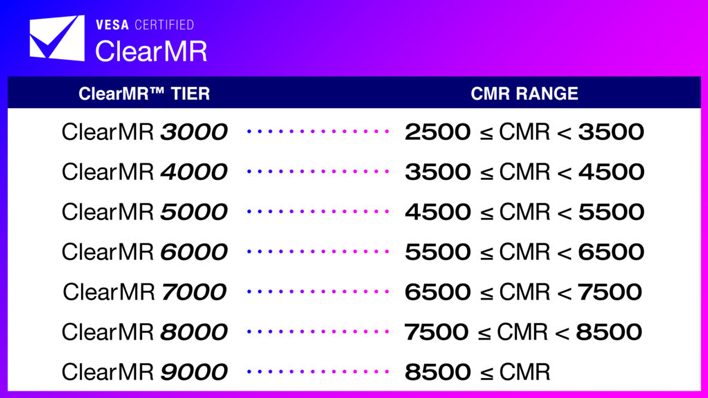Monitor Motion Blur Metrics Are Finally A Measured Standard With New VESA Spec

Motion blur in monitors most often manifests as a ghosting effect as elements move across a screen. This occurs because it takes time for an individual pixel to change from one color to another. Manufacturers have attempted to quantify this phenomenon through Gray to Gray (GTG) and then Motion Picture Response Time (MPRT), but neither has been a perfect metric and blur trails can persist across multiple display refreshes.
GTG and MPRT metrics can be gamed using techniques like pixel overshoot and undershoot. Particularly when tuned to faster response times, monitors can ramp to a color so quickly that they become less accurate and miss their target before adjusting back. This can manifest as light or dark halos around moving objects which should not have them. Sure, the measured MPRT looks great on paper, but the appearance on screen can be nauseating.
The new ClearMR certification places limits on overshoot and undershoot. It verifies compliance with a high-speed camera to ensure the results look as good visually as they are quick. ClearMR tests also disable other motion blur mitigating enhancements like backlight strobing for a more level playing field and to apply fairly to as many displays as possible.

ClearMR provides an overall “VESA Certified ClearMR” approval alongside a series of tiers from 3000 to 9000. Higher ClearMR tiers indicate better image quality and less blur. The metric is defined by a ratio of clear to blurry pixels as a percentage. VESA provides the example where ClearMR 7000 indicates 65-75 times more clear than blurry pixels.
Clear versus blurry pixels are assessed using a test pattern. The high-speed camera watches changes from one frame to another while a colorimeter is used to verify luminance. Monitors are “tested at ambient room temperature in their default power-up configuration and native-screen resolution at maximum frame rate after a warm-up period.” This focus on default configuration is important as many consumers will never adjust their monitor’s settings. People also should not need to dig around their menu options to achieve advertised results.
VESA says that while the ClearMR logo can appear on high dynamic range displays, the testing can currently only be performed in standard dynamic range mode. Until a revision to ClearMR can be made, consumers should be aware that advertised motion blur response may not accurately reflect a display’s HDR mode.
We are hopeful that this new specification will help manufacturers set better expectations for the performance of their products. GTG ratings, for example, are notorious for being measured in a variety of ways which can make translating from one OEM to another a futile affair. ClearMR and motion blur ratings in general should still not be confused with input latency times either. Frames can instantaneously and perfectly flip from one to the next but still carry significant delay from input to the action appearing on screen.
Top Image Credit: Fabrizio Verrecchia on Pexels

